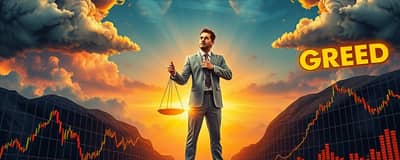Exchange-Traded Funds (ETFs) have revolutionized the investment world by allowing individuals to access broad baskets of assets with ease and efficiency. This detailed guide explores their core concepts, benefits, risks, and future trends.
What Are ETFs?
An Exchange-Traded Fund (ETF) is a pooled investment vehicle that holds a collection of securities—stocks, bonds, commodities, or other assets—and trades throughout the day on an exchange like a single stock. Investors purchase shares in the fund, which in turn owns the underlying assets. ETFs can be designed to track an index, sector, theme, or strategy, or they may be actively managed to seek outperformance.
The first US ETF was the SPDR S&P 500 ETF (SPY), launched in 1993 to mirror the performance of the S&P 500 Index. Since then, ETFs have grown from a niche product to a cornerstone of modern portfolios.
How ETFs Work
When an investor buys an ETF, they acquire shares that represent a proportional stake in the fund’s basket of holdings. Share prices fluctuate in real time, providing more flexibility and liquidity compared to mutual funds, which are priced once per trading day at Net Asset Value (NAV).
The Net Asset Value Per Share (NAVPS) is calculated by dividing the difference between the total value of the fund’s securities and its liabilities by the number of outstanding shares. Most ETFs operate as open-ended funds, meaning there is no cap on share creation or redemption, which helps keep ETF market prices closely aligned with NAVPS.
Many ETFs offer Distribution Reinvestment Plans (DRIP), allowing investors to automatically reinvest dividends and capital gains distributions without incurring additional fees.
Key Benefits of ETFs
- Diversification with a single trade: One ETF share can represent dozens or even hundreds of individual securities, spreading risk across multiple assets.
- Real-time trading: Buy or sell ETF shares anytime the market is open, with immediate execution at market prices.
- Lower expense ratios: Many ETFs offer fees that are significantly below those of comparable mutual funds.
- High transparency: ETF issuers typically disclose their holdings daily, so investors know exactly what they own.
- Tax efficiency: The in-kind creation and redemption process helps minimize taxable events within the fund.
Costs, Fees, and Transparency
One of the most appealing aspects of ETFs is their cost structure. The Management Expense Ratio (MER) covers annual operating expenses and is expressed as a percentage of the fund’s assets. In addition, investors should consider:
- Transaction costs such as brokerage commissions and bid-ask spreads
- Rebalancing costs, if the ETF manager adjusts holdings frequently
Despite these minor expenses, ETFs remain among the most cost-effective ways to achieve broad market exposure.
Market Data and Global Trends
The ETF industry has witnessed explosive growth worldwide. In the United States, assets under management reached a record $11.54 trillion as of June 2025, with year-to-date net inflows of $553.98 billion—the highest ever recorded. June 2025 alone saw $110.66 billion in inflows, marking the 38th consecutive month of net positive flows.
Asia-Pacific markets are also surging. Taiwan’s ETF AUM exceeded NT$6.4 trillion in 2024, propelled by a 65% annual growth rate and a booming investor base of 14.11 million. Bond ETFs accounted for nearly half of Taiwan’s market that year.
Types of ETFs
- Equity ETFs: Track broad market indices or specific sectors.
- Bond ETFs: Focus on government, corporate, or global debt.
- Commodity ETFs: Provide exposure to gold, oil, agricultural products.
- Thematic & Sector ETFs, Currency ETFs, Actively Managed ETFs, Inverse and Leveraged ETFs
How to Invest in ETFs
ETFs are traded through brokerage accounts—taxable or tax-advantaged retirement accounts. Investors place market or limit orders just like stock trades. Because ETFs trade intraday, investors can use strategies such as stop orders or margin to manage their positions.
Tax treatment varies by jurisdiction and account type, so it is prudent to consult a tax professional when holding ETFs in taxable accounts.
Risks and Considerations
- Market risk: ETF share prices can decline with overall market downturns.
- Tracking error: Fees, rebalancing, and execution costs may cause small discrepancies between ETF performance and its target index.
- Liquidity concerns: While major ETFs are highly liquid, niche products may have wider bid-ask spreads.
- Regulatory risks and potential fund closures for smaller or underperforming ETFs.
The Future of ETFs
The ETF landscape continues to evolve with innovations such as active ETFs, ESG-focused funds, and thematic offerings in cloud computing, cybersecurity, and beyond. In the first half of 2025, active ETFs in the US attracted over $183 billion in inflows, although some smaller strategies failed to reach breakeven scale and were liquidated.
As product expansion continues, investors can expect even greater choice and specialization—enabling precise portfolio construction and tailored risk management.
More than three decades since the launch of SPY, ETFs have transformed how individuals, institutions, and retirement plans access financial markets. By offering unparalleled flexibility, transparency, and cost-efficiency, ETFs empower investors to build diversified portfolios that align with their goals and risk tolerance. Whether you are a seasoned professional or a new investor, ETFs provide a versatile foundation for achieving long-term financial success.
Embrace the power of pooled investments and discover how ETFs can enhance your journey toward wealth creation and financial independence.














